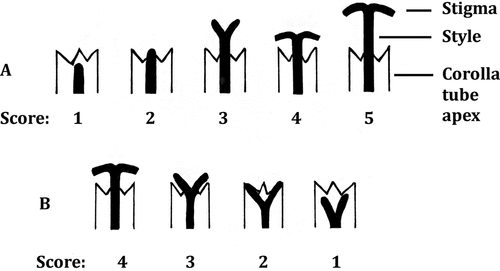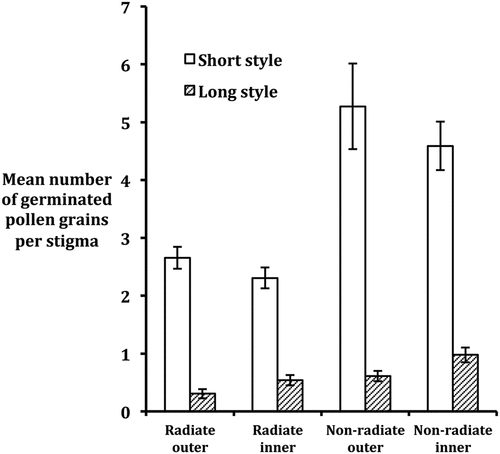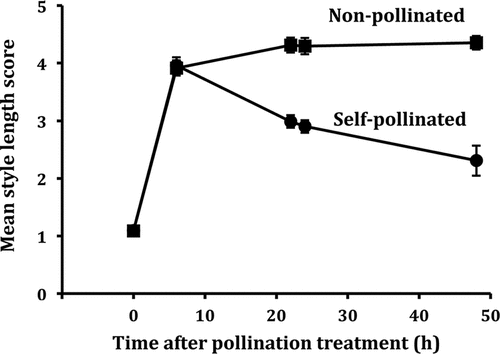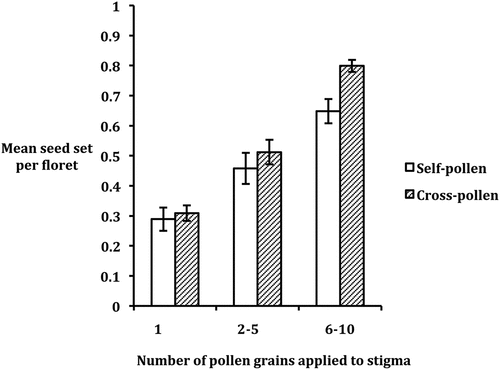Figures & data
Figure 1. Stages in style length development during phases of elongation and contraction in Senecio vulgaris. (A) Elongation phase scores: 1, style remains inserted in corolla tube just after floret has opened; 2, closed stigma protrudes from corolla apex; 3, style exserted just above rim of corolla tube with stigmatic lobes not completely unfurled; 4, style exserted from corolla tube with stigmatic lobes completely unfurled just above corolla rim; 5, style fully elongated with stigmatic lobes unfurled above corolla rim. (B) Contraction phase scores: 4, as 4 above; 3, similar to 3 above; 2, as 2 above, but stigmatic lobes remain partially unfurled with tips protruding from corolla tube apex; 1, as 1 above, but stigmatic lobes remain partially unfurled though fully reinserted into corolla tube.

Table 1. Frequency (%) of long and short styles with 0, 1, 2, 3 or >3 germinated pollen grains on their stigmas in the radiate and non-radiate variants of Senecio vulgaris in Scottish and Welsh populations.
Table 2. Frequency (%) of styles (pooled over populations) with 0, 1, 2, 3 or >3 germinated pollen grains on their stigmas of Senecio vulgaris in Scottish and Welsh populations.
Figure 2. Mean number of germinated pollen grains present on stigmas of styles in long- and short-styled florets of Senecio vulgaris in Scottish and Welsh populations. Standard errors are indicated as bars.

Figure 3. Mean style length scores of non-pollinated and self-pollinated florets of Senecio vulgaris at time of treatment (0 h) and at intervals of 6, 22, 24 and 48 h afterwards. Standard errors of means are indicated by bars.

Table 3. Mean seed set per floret of the radiate and non-radiate variants of Senecio vulgaris following placement of 1, 2–5 or 6–10 grains of self- or cross-pollen per stigma.

